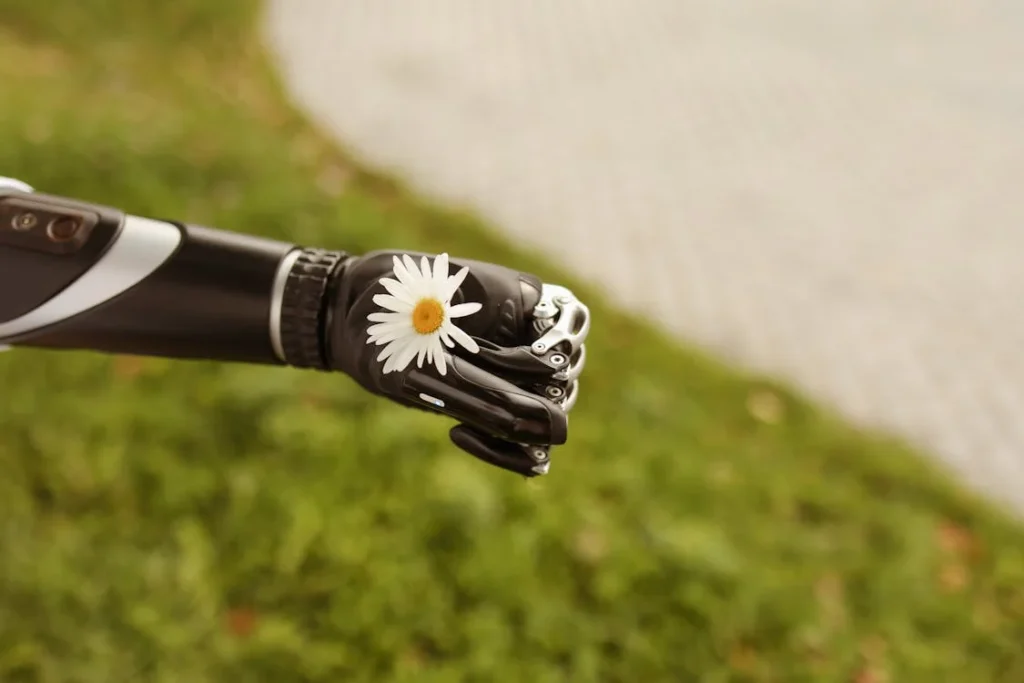Most of us have tried setting goals. And most of us have also seen them fall apart. We get excited at first, start strong, but somewhere along the way… we stop. Life gets busy. Motivation fades. And before we know it, our goal is a distant memory.
But what if goal-setting didn’t feel like work? What if it felt like play?
That’s where gamified therapy apps come in. These clever tools are changing how we heal, grow, and stay motivated. Whether you’re recovering from an injury, learning to use a bionic hand, or just trying to stay active and consistent—these apps make it fun, trackable, and easier to stick with.
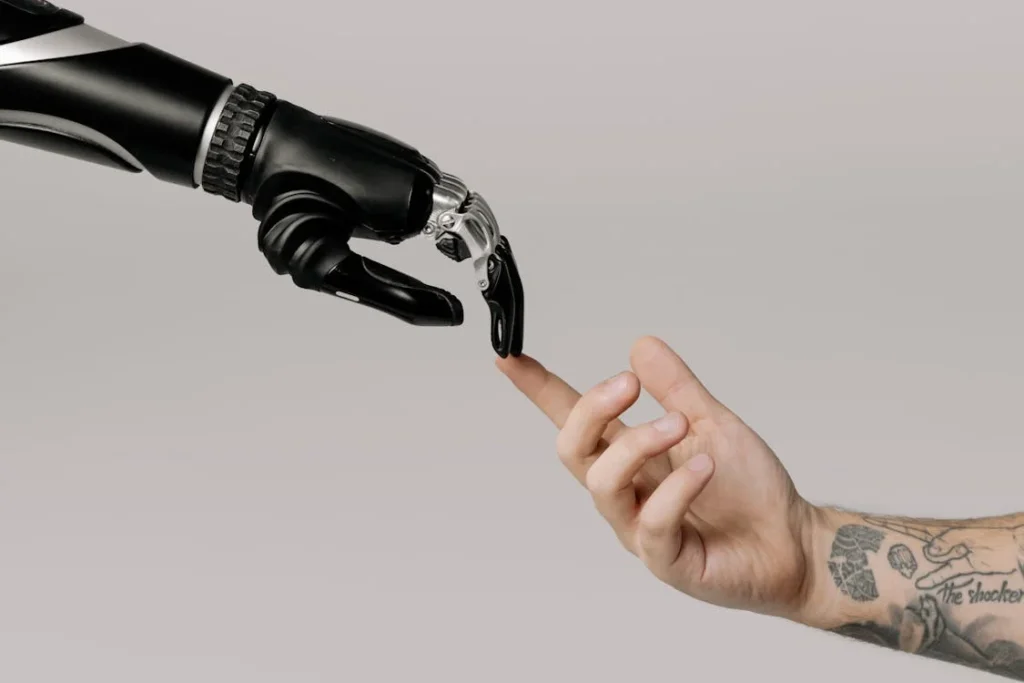
Why Most Goals Fail (And How Gamified Apps Can Help)
The Big Problem with Traditional Goal-Setting
When we think of setting goals, we often think of making big plans. We write down what we want to achieve, pick a deadline, and hope for the best. At first, this feels exciting. There’s energy and optimism. But slowly, that energy fades. The goal starts to feel heavy. We miss a day. Then another. Guilt creeps in. And eventually, we give up.
This isn’t because we’re lazy or unmotivated. It’s because the traditional way of setting goals often forgets how our brains work. It asks us to push forward with discipline alone, which can be exhausting, especially during recovery or therapy.
Our brains are wired to love rewards, feedback, and small wins. That’s why games are so addictive. They give you points. They celebrate your progress. They show you exactly how far you’ve come. Most goal-setting systems don’t do that. They’re all about the end result, with little joy in the process.
That’s where gamified therapy apps bring something new—and powerful.
How Gamified Therapy Changes Everything
Gamified therapy apps are designed to feel more like a game and less like a chore. They turn boring exercises into something enjoyable. Instead of just doing finger stretches or wrist rotations, you’re playing a mini-game. You’re chasing high scores. You’re unlocking new levels. You’re collecting stars or points as you move forward.
This may sound simple, but it makes a big difference. When something feels fun, we do it more often. We look forward to it. And when we do something regularly, even small things, we see big results.
For someone using a prosthetic hand like Grippy™, these apps do more than just make rehab interesting. They help train the brain to trust the hand. They help build confidence. They make each small movement feel like a big step forward. That’s powerful.
The Magic of Micro-Motivation
One of the biggest reasons people give up on goals is because progress feels invisible. You work hard but don’t see change. That can be discouraging.
Gamified apps break that cycle. They show you progress in real time. Maybe it’s a meter that fills up as you complete a task. Maybe it’s a happy sound or a virtual trophy. These may seem like small things, but they release dopamine—the feel-good chemical in your brain. And that keeps you coming back.
This micro-motivation turns effort into excitement. You start to enjoy the process, not just the result. That shift is what helps goals stick.
Real Progress, Not Just Points
It’s easy to think of games as silly or childish. But the best gamified therapy apps are built with science. Every level is designed to improve a skill. Every movement has a purpose. These aren’t just games—they’re tools that support real healing.
For example, if you’re learning to use your bionic fingers, a game might ask you to pinch objects or grip virtual blocks. You’re having fun, but you’re also practicing a real-life motion. The game doesn’t replace therapy—it enhances it.
This is especially important for people adjusting to life with a prosthetic. It can be overwhelming. There’s a lot to learn. But when progress is wrapped inside a game, the journey feels lighter.
You’re not just told what to do. You’re guided, encouraged, and rewarded. That makes a world of difference.
Staying Consistent Without Burning Out
One of the hardest parts of any goal is staying consistent. We all start strong, but sticking with it is where most people struggle.
Gamified therapy apps help by creating small routines that fit easily into your day. They remind you gently, they don’t nag. And because they’re fun, they don’t feel like one more task on your to-do list.
Instead of dreading your next session, you might look forward to beating your last score. Instead of forcing yourself to do exercises, you might enjoy the challenge. That natural motivation is what keeps the habit going.
And over time, it’s that consistency—not perfection—that leads to real, lasting change.

How to Set Better Goals Using Gamified Therapy
Start with What Feels Real
The first step to setting goals that stick is choosing something that feels real to you—not what someone else says you should do. This is especially true when you’re going through therapy or rehabilitation. Your body, your journey, and your pace are unique. So your goals should match that.
With a gamified therapy app, the experience starts where you are. You don’t have to pretend to be stronger or faster than you are. The app meets you at your level. Whether it’s learning to close your fingers with a prosthetic or regaining wrist strength, you can pick a starting point that feels manageable—not overwhelming.
And that’s important. When we feel overwhelmed, we quit. When something feels doable, we stick with it.
So when you’re setting a goal, ask yourself: what feels achievable today? Not next month. Not next year. Today. That’s your real starting line.
Turn Big Dreams into Tiny Steps
Most of us dream big. We want to regain full mobility. We want to master our prosthetic. We want to get back to work or play our favorite sport again. These are all beautiful goals. But they’re big. And big goals without small steps can feel scary.
Gamified therapy breaks those dreams into bite-sized wins. Instead of saying “get full hand control,” the app might say, “complete 5 successful pinches today.” That’s a tiny step. But it’s progress.
As you complete more of these little tasks, the app shows you how far you’ve come. That’s powerful. It builds trust in yourself. It shows that your effort matters.
So when you set your goal, think: what’s one small step I can take right now? That’s the kind of goal that sticks.
Make Progress Visible and Fun
One reason gamified therapy apps work so well is that they make progress visible. You don’t have to guess if you’re improving. The app shows you. Maybe it’s a chart. Maybe it’s a happy sound. Maybe it’s a level that unlocks. No matter the form, that visual feedback makes your brain light up. It feels good. It makes you want to keep going.
When you’re doing therapy the traditional way, you may not feel the same excitement. It’s harder to notice change. But when progress is turned into a game, it becomes clear, fast, and fun.
This sense of reward isn’t just about feeling good. It builds confidence. It helps you believe in the process. And when you believe in something, you’re much more likely to keep doing it.
Celebrate Tiny Wins Like Big Victories
Most people wait until they hit a big milestone before they celebrate. But in therapy—and in life—tiny wins are everything. Being able to move one more finger. Holding a cup. Opening a door. These moments are huge. They deserve to be noticed.
Gamified apps are designed to celebrate those small steps. Every time you complete an exercise or hit a streak, they cheer you on. They give you stars, badges, or encouraging words. It may sound simple, but this kind of feedback creates a sense of pride.
When you feel proud, you keep going. You believe in yourself more. You show up more. That’s the emotional fuel that helps your goals last.
So don’t wait for a “perfect” result to feel good. Every step forward is a win. Celebrate it.
Use Challenges, But Don’t Punish Yourself
Another reason gamified therapy apps help with goal-setting is that they create healthy challenges. You’re gently pushed to do just a little more than yesterday. This keeps things interesting. You don’t feel stuck. You feel like you’re growing.
But here’s the important part: if you miss a day or fall behind, the app doesn’t shame you. There’s no red alert saying you’ve failed. It just nudges you to try again.
That kindness matters. Shame is a terrible motivator. It makes people quit. But encouragement? That makes people try again. And again.
So when you’re setting goals for yourself, allow room for mistakes. Don’t make your goals rigid. Make them flexible, like the app. Make them something you can return to, no matter how long you’ve been away.
You’re human. Life happens. The key is not perfection—it’s coming back.

Making Therapy Personal: How Gamified Apps Adapt to You
One Size Does Not Fit All
No two people heal the same way. Some move faster, some slower. Some have more pain. Some have more support. This is especially true when using a prosthetic hand or recovering from surgery. That’s why personalizing therapy is so important—and it’s one of the best things about gamified apps.
When you use a gamified therapy app, it doesn’t just give you a fixed set of tasks. It learns from how you move, how often you practice, and what you struggle with. It then adjusts. It might lower the difficulty if it sees you’re having a hard day. Or it might increase the challenge if you’re improving quickly. Either way, the experience stays matched to your ability.
This kind of smart feedback keeps you from feeling frustrated or bored. You’re not forced into someone else’s pace. You follow your own. And that’s what helps people stay motivated for the long haul.
You’re in Control of the Journey
One of the hardest parts of recovery is feeling like you’re not in control. Doctors tell you what to do. Therapists guide your steps. And while that support is important, it can also feel like you’re just going through the motions.
Gamified therapy puts you back in the driver’s seat.
You get to choose when to play, how long to play, and which challenges to take on. You see your own progress on your screen. You make decisions. And little by little, that sense of control comes back. That’s a powerful feeling—especially when everything else in life may feel uncertain.
You’re not just following instructions. You’re actively participating in your own healing. That shift in mindset can change everything.
Your Emotions Matter, Too
Healing isn’t just physical. It’s emotional, too. There are ups and downs. Days when you feel proud. Days when you feel tired or discouraged. And while most therapy plans focus on the body, gamified apps speak to your emotions as well.
The bright colors, the cheerful music, the gentle messages—these little things help lift your mood. And when your mood improves, so does your motivation. You feel seen. You feel supported. And even though it’s just a screen, it can feel like someone is cheering you on.
That emotional support is no small thing. It’s often the missing piece in traditional therapy. But in gamified therapy, it’s built right in.
Tracking the Journey (Without Pressure)
Progress isn’t always easy to see, especially when changes are small. That can be frustrating. You might be improving, but without a clear way to track it, you may feel stuck.
Gamified apps fix that by tracking your movement, effort, and success in real time. You can open the app and see a graph, a score, or a streak. You can look back and say, “Wow, I couldn’t do this two weeks ago.”
But here’s the best part—it doesn’t pressure you. If you miss a session, the app doesn’t scold you. It gently encourages you to try again. That balance—between support and forgiveness—is what keeps people coming back.
It makes the journey feel like something you want to do, not something you have to do.
Built for Every Age, Every Stage
One of the reasons gamified therapy works so well is because it’s built to be friendly for everyone. It’s not just for kids, though children love it. It’s not just for adults, though grownups benefit a lot too. The design is simple, clear, and welcoming for people at any stage of recovery.
For someone adjusting to life with Grippy™, our bionic hand, the app becomes a gentle partner. It makes those first awkward movements less scary. It turns trial and error into fun. It builds up your confidence—one small win at a time.
For older adults, the app removes confusion. You don’t need to figure out complicated settings. Just tap and go. And for younger users, it turns therapy into something they actually look forward to.
That broad reach is important. Because healing isn’t limited to one type of person. And motivation shouldn’t be either.
A Habit That Feels Like Play
The best part of all? Gamified therapy doesn’t feel like therapy. It feels like play.
And that’s the secret sauce.
When something feels like play, your brain treats it differently. You don’t need to use willpower. You don’t need to push yourself. You naturally want to do it. That’s what builds habits. That’s what keeps you consistent. And in therapy, consistency is everything.
So when we talk about goals that stick, this is what we mean. Not goals that are forced. Not goals that rely on pressure. But goals that become part of your life because you enjoy the process.
That’s what gamified apps make possible. And that’s why they’re a game-changer—literally.
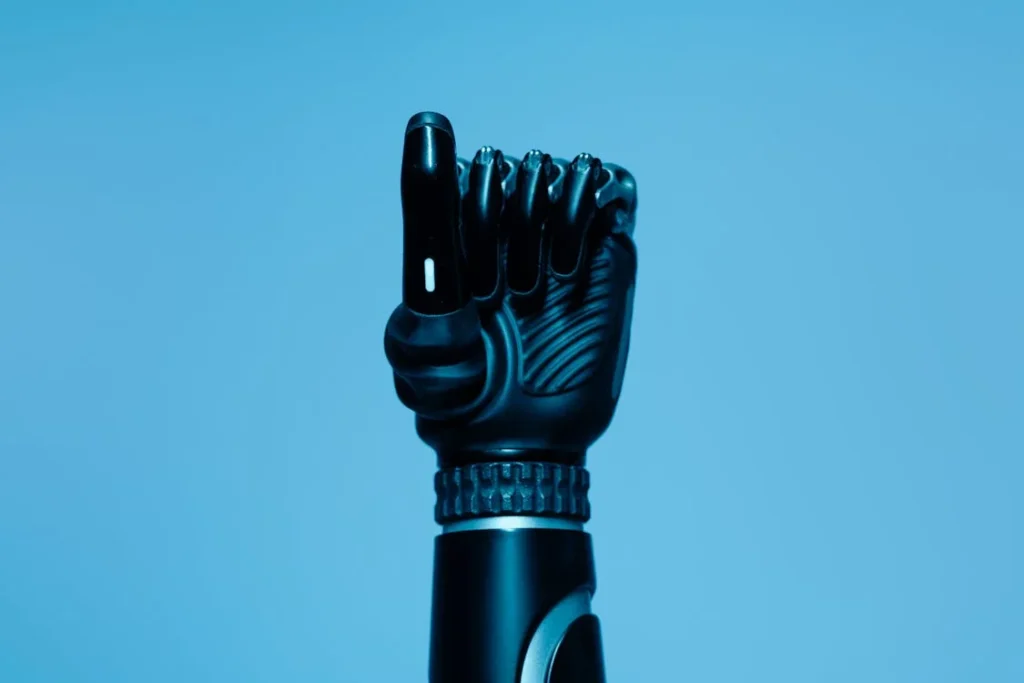
Turning Recovery Into a Lifestyle: How Gamified Therapy Creates Lasting Change
Therapy Doesn’t End After the App Closes
For many people, the hardest part of recovery begins when formal therapy ends. Maybe you’ve completed your clinic sessions. Maybe your insurance ran out. Or maybe life just got busy. It’s easy to stop. But healing is not just about one phase—it’s a lifelong process.
This is where gamified therapy apps become even more powerful. They don’t stop when the therapist does. They live in your pocket. You can open them any time, even if it’s just for five minutes. They’re there when you wake up early or before bed. They’re there on a bad day when you need a little push. They help turn your therapy from something you schedule into something that becomes part of your everyday life.
You don’t have to think of it as rehab. It just becomes something you do—like brushing your teeth, stretching, or having a cup of tea. That’s how real change happens. Quietly. Consistently.
Bringing Family and Friends Into the Journey
One of the hidden struggles of recovery is how lonely it can feel. You may have the support of loved ones, but they don’t always understand what you’re going through. They want to help, but they don’t know how. And sometimes, you don’t know how to ask.
Gamified apps offer a way to bridge that gap.
Many apps allow you to share your progress with friends or family. Maybe your child plays a game alongside you. Maybe your spouse sees how many stars you earned today. Maybe your therapist checks your dashboard and cheers you on during your next visit.
That shared visibility builds connection. It makes your journey feel less private and more celebrated. And when the people around you are part of your progress, they become part of your success.
You stop walking the path alone.
When You Feel Like Quitting (But Don’t)
Let’s be honest—there will be days when you don’t want to try. Days when you feel tired, discouraged, or stuck. That’s human. But here’s where gamified therapy apps offer something special.
They don’t just remind you to show up—they make you want to.
Maybe there’s a new challenge unlocked. Maybe there’s a fun animation waiting. Maybe you just want to beat your last score. These small nudges are often enough to get you going. And once you start, momentum carries you.
The app doesn’t force you with guilt. It invites you with joy. And that gentle pull can be the difference between stopping and continuing.
It’s okay to rest. But with gamified therapy, it’s easier to come back.
Building Confidence One Session at a Time
Confidence doesn’t come from huge wins. It comes from showing up again and again, even when it’s hard. And that’s what gamified therapy encourages. You’re not just building muscle or mobility—you’re building belief in yourself.
Each time you complete a session, your confidence grows. Each time you see your progress chart, it reminds you that you’re improving. And that sense of “I can do this” starts to shape how you see yourself.
For someone who’s learning to use a prosthetic like Grippy™, that’s a huge shift. It’s not just about using the hand. It’s about trusting it. It’s about believing that your life can still be full of movement, freedom, and independence.
That belief starts with small wins. And gamified therapy makes those wins easy to see.
Making Health a Habit That Lasts
We’ve all started things we didn’t finish. New year goals. Workout plans. Healthy diets. They start strong and fade fast. Why? Because they’re hard to maintain. They’re not fun. And they don’t fit naturally into our lives.
Gamified therapy flips that script. It turns movement into a habit you enjoy. It makes recovery feel less like an effort and more like a rhythm. And the best part? That rhythm doesn’t stop when your physical goal is complete.
You may start with a goal like “move all five fingers” or “grip a glass of water.” But over time, you’ll notice something deeper. You’re showing up every day. You’re staying active. You’re staying connected to your body. That’s not just therapy. That’s wellness.
Gamified apps make wellness feel doable—something you can carry with you for the rest of your life.
The Future of Healing Is Already Here
At Robobionics, we believe that technology should feel human. That healing should feel hopeful. And that progress should feel personal.
That’s why we’re proud to support gamified therapy through our prosthetics and tools. We don’t just make hands—we build confidence, motion, and meaning. With Grippy™, and with our gamified rehab app, we help turn therapy into something joyful.
Because when therapy is joyful, goals don’t just stick—they grow.
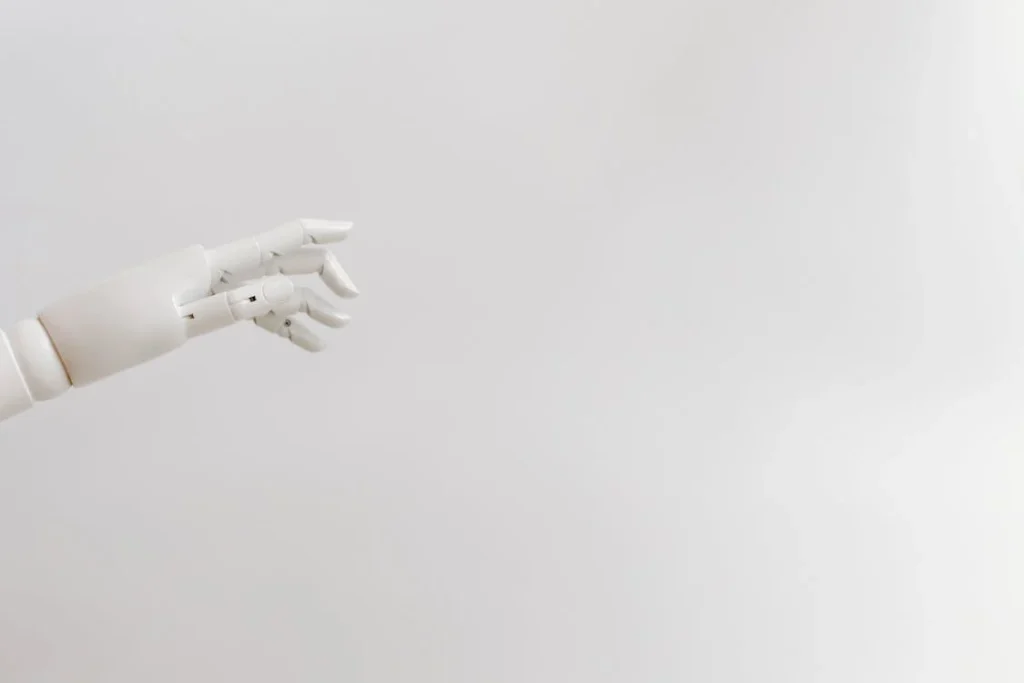
How Gamified Therapy Builds Emotional Resilience (Not Just Physical Strength)
Healing the Mind While Healing the Body
When someone loses a limb or goes through physical trauma, the emotional pain can be just as deep as the physical. There’s fear. There’s frustration. Sometimes, there’s shame or a sense of being “less than.” These feelings are real, and they deserve just as much care as the injury itself.
Most traditional rehab programs focus mainly on physical recovery—range of motion, muscle strength, function. But the emotional side often gets left out. This is where gamified therapy can do something incredible. It doesn’t just train your body—it lifts your spirit. It helps you feel joy in movement again. It reminds you that healing isn’t only about what you can do. It’s also about how you feel doing it.
And when people feel better emotionally, they heal faster physically. That’s not a guess—it’s science. Positive emotions boost your brain chemistry. They lower stress. They keep you going when things get hard.
So in many ways, gamified therapy is not just fun. It’s medicine for your mindset.
Breaking the Cycle of “I Can’t”
After an injury or amputation, it’s easy for the brain to fall into a pattern: “I can’t do that anymore.” This mindset grows quietly. Every missed movement feels like failure. Every small setback feels huge. Over time, this becomes a mental block.
Gamified therapy breaks this cycle.
It introduces challenges in a low-risk, playful way. The app might ask you to tap a button with your bionic finger. Maybe it’s just one movement. You try it, and you succeed. The screen cheers. You try another. It works. That spark of success rewires your brain. Slowly, “I can’t” becomes “maybe I can.” Then “I can.”
That shift changes everything. It’s not just about training your muscles—it’s about restoring belief. The app helps you unlearn doubt and relearn courage.
Creating a Safe Space to Try Again
Failure in therapy can feel personal. You try to do a movement. It doesn’t work. Someone watches. You feel embarrassed. Maybe you stop trying. In traditional settings, this can happen often—and it chips away at confidence.
Gamified apps offer a safe space.
There’s no one judging you. No pressure. If you miss the target, you just try again. The app doesn’t laugh. It doesn’t frown. It just resets the game. And when you succeed, even a little, it celebrates.
This kind of emotional safety matters deeply. It encourages people to keep going. It allows room for trial and error without shame. And over time, it creates a habit of trying again—not giving up.
That’s emotional resilience. And it’s just as important as physical strength.
Turning Pain into Play
Physical pain and mental fatigue can go hand in hand. Repetitive exercises often remind people of what they lost, rather than what they’re gaining. But when therapy is gamified, the experience shifts.
You’re not just doing “wrist flexion reps.” You’re guiding a spaceship. You’re not just doing finger taps. You’re catching stars. The same physical action—repackaged into something joyful—feels lighter.
This doesn’t erase the pain. But it makes it easier to move through. It gives the brain something to look forward to. It provides distraction and delight, two things that ease both stress and discomfort.
Over time, this reduces fear. It builds a positive emotional link between you and your therapy. And that’s what keeps you coming back.
A New Identity: Not Just a Patient, But a Player
The words we use shape the way we see ourselves. “Patient” often means someone who waits, someone who suffers. But “player”? That’s someone who acts. Someone who engages. Someone who grows.
Gamified therapy shifts how you see yourself.
You’re not just following orders from a medical professional. You’re a player in your own story. You have goals, levels, missions. You’re active. You’re curious. You’re strong. And you’re building a new version of yourself—one session at a time.
This new identity has emotional power. It helps people move from passive to active. From discouraged to hopeful. And when you carry that mindset into the rest of your life, it transforms everything.
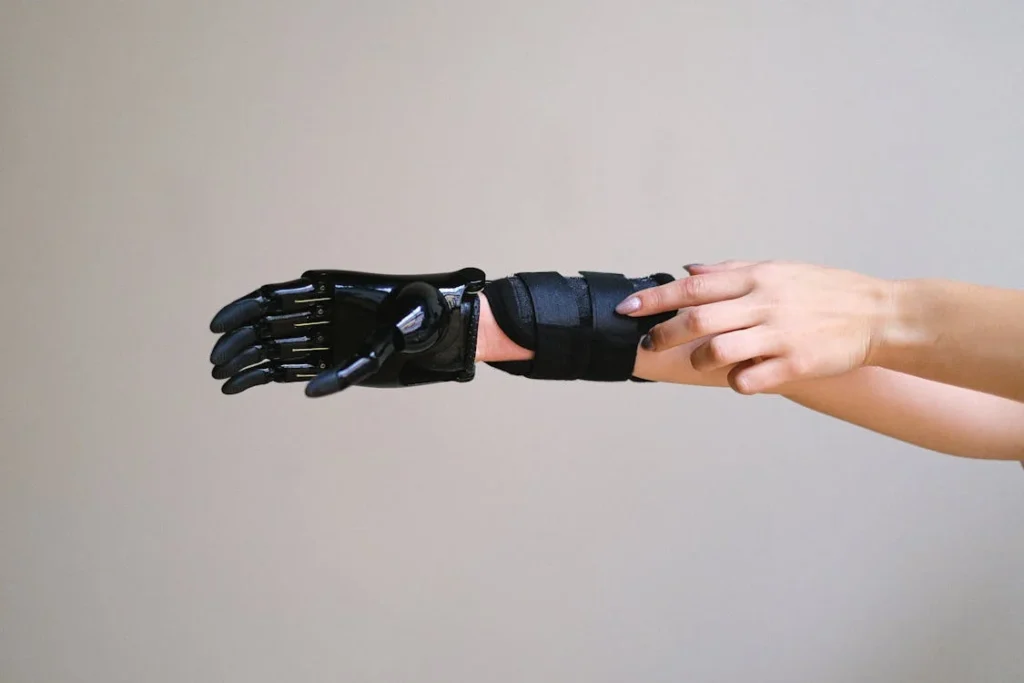
Design That Heals: Why the Look and Feel of Gamified Therapy Matters
Therapy Is Also a Visual Experience
When people think about therapy, they usually think about movement and exercises. But there’s another part that’s just as important—what you see. The colors, the layout, the animations, the way the app responds to your touch—these things may seem small, but they can make a big difference in how you feel during therapy.
Gamified therapy apps are carefully designed to feel friendly and welcoming. The buttons are big. The colors are cheerful. The instructions are easy to follow. There’s no clutter. Everything is created to help you relax and focus.
Why does this matter? Because when you’re tired, frustrated, or in pain, the last thing you want to do is fight with a confusing screen. You want therapy that feels easy to start, smooth to use, and rewarding to complete. Good design makes that happen. It lowers stress. It increases clarity. It helps you stay engaged without feeling overwhelmed.
This kind of thoughtful design turns therapy from something you dread into something you can navigate. That difference matters more than most people realize.
Colors and Sounds That Speak to the Brain
Every color and sound in a gamified app has a purpose. Warm colors like orange, yellow, and green create feelings of comfort and energy. Soft sounds and playful music help you relax. When you succeed, the app might reward you with a happy chime or a spark of light—these are more than decorations. They’re signals to your brain that say, “Good job, keep going!”
This kind of feedback helps build emotional momentum. It makes success feel good on a sensory level. Over time, your brain begins to associate therapy with positive feelings. It’s no longer just effort. It becomes enjoyable.
That’s the power of smart design. It doesn’t just help you understand what to do—it shapes how you feel about doing it.
Accessibility for All Abilities
Another strength of gamified therapy is how it includes people of different abilities. Maybe your vision isn’t perfect. Maybe your fingers are stiff or slow. Maybe reading long instructions is difficult. A well-designed app doesn’t punish you for these challenges. It adapts to you.
This includes things like voice instructions, large text, simple icons, or customizable controls. These features make sure that no one feels left out. They remove barriers. They welcome people in.
This kind of inclusive design is more than good tech—it’s a sign of respect. It says, “We see you. You belong here. And we’ve made this with you in mind.”
At Robobionics, we believe everyone deserves tools that are not only advanced—but also deeply human. That belief is built into our own gamified rehab app. We know that healing isn’t one-size-fits-all, and we design every screen, every tap, every sound to support your unique journey.
From Boring to Beautiful
Let’s face it—many medical apps are dull. The screens are grey. The buttons are small. Everything feels cold and clinical. That kind of design can make therapy feel like punishment.
Gamified apps take a different route. They’re made to be beautiful. Not fancy or flashy—just warm and inviting. A beautiful app tells you, without words, that your experience matters. That someone cared enough to create something you’d enjoy using.
This emotional comfort can go a long way. When something looks good, you want to return. You feel proud using it. You’re not just doing therapy—you’re using a tool that was designed with love and attention.
And in a world where so much of rehab feels hard, a little beauty goes a long way.
Conclusion
Healing doesn’t have to be hard. It doesn’t have to be boring, lonely, or painful. With gamified therapy apps, recovery becomes something you want to do—not something you have to push through. It turns goals into games, effort into enjoyment, and small steps into major wins.
At Robobionics, we believe in creating tools that don’t just heal the body—but also lift the heart. Whether you’re learning to use your new Grippy™ bionic hand or rebuilding strength after injury, our gamified rehab app supports you every step of the way—with joy, care, and a little celebration.
So if you’re ready to set goals that finally stick—and enjoy the journey as much as the result—start with us.
Let’s make recovery feel like progress again.
Your comeback story starts here.



